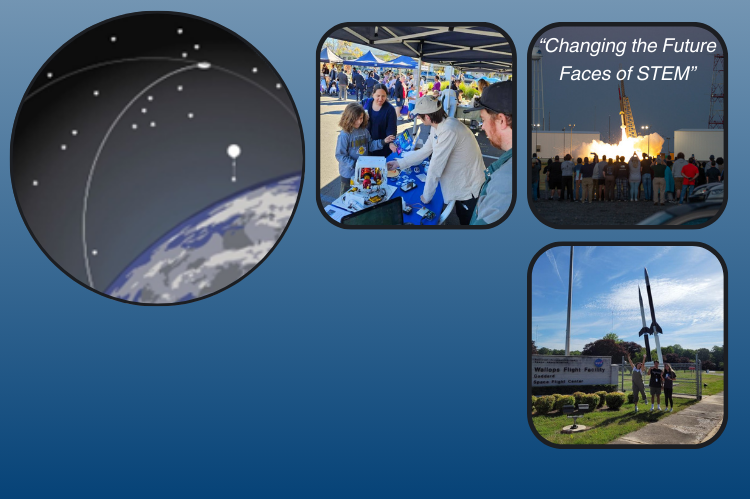NASA RockSatX
NASA RockSat X provides educational institutions and STEM field students from around the world with the opportunity to design, fabricate, and launch a scientific payload onboard a real NASA rocket. The program, run through the Colorado Space Grant Consortium, is focused on encouraging students to receive real world experience, and develop original scientific experiments that can withstand true spaceflight conditions.
RockSatX poses especially rigorous challenges for students as experiments are exposed to the harsh conditions of spaceflight. Student proposals begin in the fall when collegiate teams pitch their ideas to the NASA selection committee. Over the course of multiple rounds of feedback and review, final proposals are judged for viability and qualifying teams are selected for spots on the NASA rocket. This leads to fabrication and testing in the spring and an ultimate launch in the summer from NASA Wallops Flight Facility in Virginia.
Current Project - ATLAS/PHAROS
2025 marks College of the Canyons’ first attempt at engineering a full-size payload (experiment) for the NASA Wallops’ RockSat-X program.
The payload consists of two projects:
Advanced 3D LiDAR Apparatus For Space (ATLAS)
Aims to test the efficacy of LiDAR scanning in space as a tool for identifying anomalies in spacecraft structure.
A LiDAR scanner will be extended around or near the thermosphere, spin in place 360 degrees, capture high-resolution 3D topology data, and generate a 3D model from this data. The goal is to generate and store this model prior to retrieval, though the minimum success criteria for the project only requires point cloud data to be gathered and stored.
Positional Heuristic Approach Regarding Optical Sensors (PHAROS)
Aims to test the efficacy of Machine Vision and gyro technology in self-stabilizing a deployed capsule. Upon nearing apogee, the PHAROS system will deploy a capsule which contains a student-built gyro system. The capsule will use information from the capsule’s IMU unit to stabilize attitude orientation during descent. A machine vision on the payload will watch the capsule’s descent and record its recommendations on how the capsule should reorient itself.
This two-part payload was approved for integration on NASA Wallops’ RockSat-X sounding rocket in Summer 2025.
Student Leads
Project Manager: Mark FulltonDeputy Project Manager: Johny Barbar
Electrical Lead: Aram Aprahamian
Electrical Sublead: Brandon Kelpis
Mechanical Lead: Ryan Jones
Mechanical Sublead: Thomas Auerbach-Dinculescu
Software Lead: Cameron DeMartini
Software Sublead: Harout Mkhitaryan
Science Co-Leads: Vishal Anil & Anthony Frangoul
PHAROS Sublead: Shaun Ford
For more information about the NASA RockSatX program at large, visit the NASA RockSatX Official Webpage

 My Canyons
My Canyons  Canvas
Canvas 
